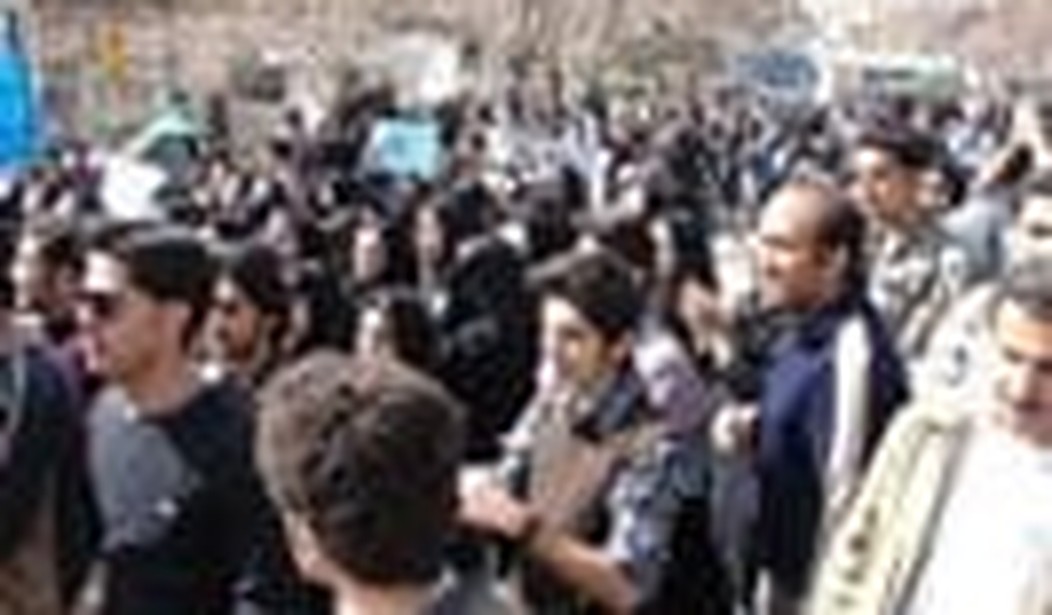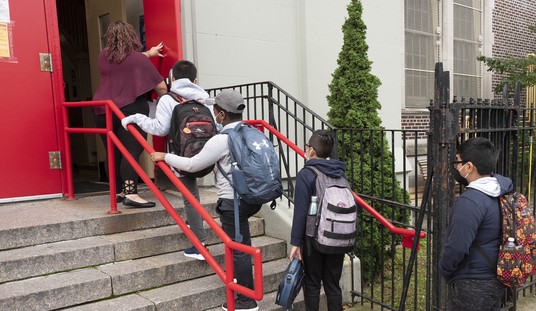For nearly two weeks, Shiraz University in central Iran has been paralyzed by a student demonstration that refuses to die and appears to be encouraging an atmosphere of protest on campuses around the country.
The protests began on February 24, when more than 500 students in Shiraz University marched from their dormitories into the main campus and demonstrated against the school’s chancellor Mohammed Hadi Sedeghi, demanding that he resign. The angry protests have taken place daily ever since.
In another country, angry student protesters might be considered a campus matter and wouldn’t necessarily have national significance, but the Shiraz students rising up and rebelling against Sadeghi, a former Revolutionary Guard Corps commander who was personally appointed by Mahmoud Ahmedinejad in an effort to crack down on campuses and rid them of non-Islamic influences, has wider implications. Sadeghi is clearly a political figure and an Ahmedinejad ally — he was in charge of the upcoming parliamentary election committee in the province of Fars.
The angry students are chafing at the restrictive environment on campus in which campus guards are permitted to enter their dorm rooms without any prior warning. Students believe Sadeghi manipulated the internal election of the university council, rejecting 108 student candidates, which resulted in banning them from entering the race and imposing extreme limitations on student print media and activities. There is also general unhappiness with their food and housing, and underlying the action there is general discontent. Fliers distributed among the students are claiming that Sadeghi embezzled approximately $22 million following the sale of a university building.
It isn’t the first protest against the unpopular chancellor. Last April, students protested against a tightened dress code which included huge bulletin boards at the school’s male dormitories with a statement ordering male students not to wear “shorts and tank tops in the dormitory’s halls or where they sleep.”
From the moment the protests first broke out, government security agents were keeping tabs on the students as they marched towards the chancellor’s office chanting: “This is the final message, the student movement is ready for insurrection,” “The movement continues, even if bullets come,” “Resign, resign,” “Freedom of the print media,” “Long live freedom,” “Support the noble nation, support, support,” and “They close the nuclear file, but where are the students’ files?” — protesting jailed students that are missing since the time of their arrests, without any news or closure of their uncertain situation.
The campus was shut, but citizens gathered at the gates of the university to watch the students’ protest — among them, faculty members and other university employees.
On that first day of demonstrations, Sadeghi managed to quietly slip away from campus. Demonstrators rushed in his direction to capture him, but the campus police prevented them from reaching him. After his departure from campus, students occupied his office and vowed to sit in until he resigned.
After, agents of the IRI, employed by the university, blocked the main gates of the campus and parked buses at the entrance to prevent the outsiders from entering the campus and to contain the demonstrations within. Islamic security forces stood at the gates preventing any contact between the students and the people.
Naturally, little has been heard of the student uprising on official Iranian media. But Radio Farda, a Persian-language, 24/7 radio service financed by the U.S., interviewed some of the demonstrators inside the campus. Its reports have been translated by Radio Free Europe:
Student Mohammad Mehdi Ahmadi complained to Radio Farda on February 26 of “pressures” the university chief, whom he identified as Dr. Sadeqi, was imposing on the campus. He said these included the disqualification of 108 students who had sought to run for seats in a student council, the expulsion of various students from dormitories, the closure or evacuation of dormitories for married students, and pressures on student journals and activists. “These all became a trigger for the … protests,” he said.
As the protest has continued, the numbers of students has grown into the thousands, organizers say, despite attempts to break it up by the authorities, with actions such as shutting down the main water lines into the student dormitories.
Among the student chants: “Sadeghi, the Pinochet, Resign, Resign,” and “This is our last warning, the student movement is ready to rise up.”
Multiple YouTube videos have been posted, including those showing students marching and chanting “The noble people, we are ready, we are ready.” As they gathered on the steps of the administration building, they chanted “The noble people, support, support” and “Freedom and justice is the remedy for our people’s pain.” There was also repeated chanting of “Resign, resign, we don’t want a corrupt chancellor,” “This is our last warning, students’ movement is alive,” or “We don’t want a Pasdar [a member of the Islamic Revolutionary Guard Corps] as our chancellor.”
The pro-government, pro-Sagedhi point of view has not gone unrepresented at the protests, but is not very popular.
At one point, a student took the microphone and said: “Since the western media is reporting about your demonstration, then you are being supported by the United States.” Other students booed him and took the mic back from him.
Another representative of the dean claimed that the embattled administrator was ready to answer students’ questions in the auditorium, but the students shot back that “the only thing that he can do is resign. There is nothing to be said between us.”
As the protests entered their second week on Monday, Iranian secret police reportedly began to take more aggressive action to end the embarrassing incident. Ten student leaders have been contacted and threatened. About 25 families of the striking students have been contacted by the campus agents, pressured, threatened, and forced to get in touch with their children and ask them to call off the protest. Eight students have been named and summoned to the revolutionary court to answer for their conduct.
The student protest movement appears to be widening. There is news that students of another higher educational institution in the city of Shahroud, in the province of Khorasan, more than a thousand kilometers away, have followed suit and some students have been arrested by the secret police.
According to Radio Free Europe: “Citing unnamed activists, Radio Farda reported other ongoing protests or sit-ins in Shahrud University in northeastern Iran and the Teacher Training University in Tehran. Ahmadi told Radio Farda that specific issues were merely triggers for protests in Iran’s increasingly restricted campuses. ‘The atmosphere the … government has created in universities is [one] of protest, and the slightest issue can trigger large protests,’ he said.”
On Wednesday, reports emerged that the student unrest had made it to Iran’s capital: between 100 and 200 students at Allameh Tabatabai Univeristy in Tehran protested against the banning of 40 student leaders who had organized a demonstration against the authorities.
An Iranian activist website also reported that:
Students of Bahonar College held an angry demonstration over a fellow student beaten up by the chief of the school’s security. They shouted: “University is not a military garrison.”
Ardeshir Arian is a special correspondent for Pajamas Media; he covers Iranian affairs.









Join the conversation as a VIP Member